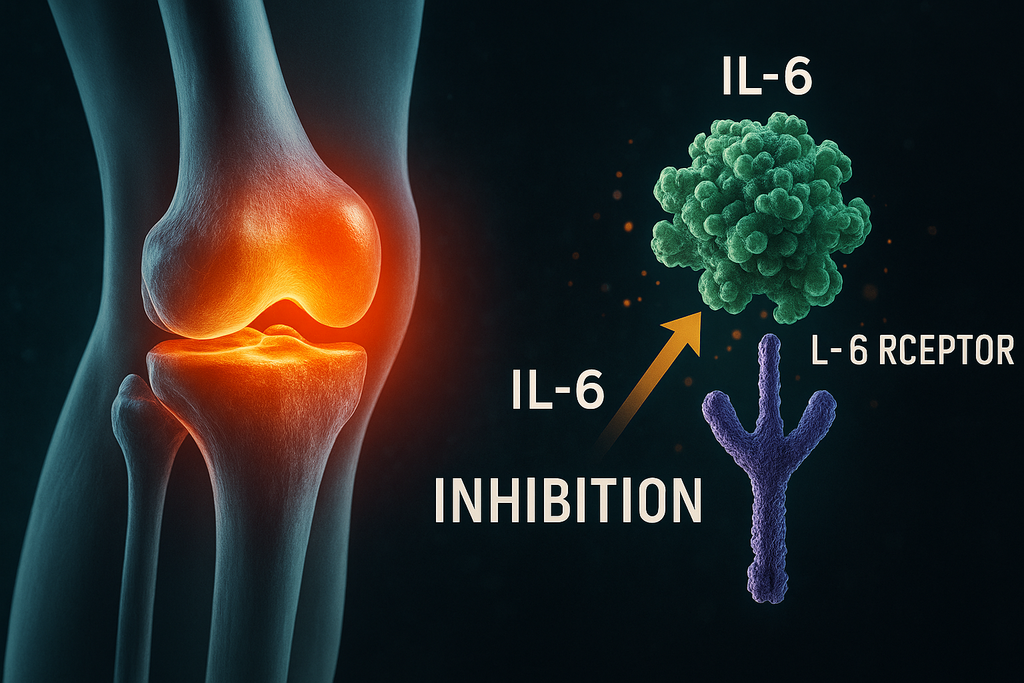News
Beyond Band-Aids: The Peptide Revolution in Accelerated Healing
accelerated healing anti-scarring biohacking BPC-157 collagen production GHK-Cu healing peptides inflammation control injury recovery muscle repair peptide benefits peptide therapy peptides post-surgery recovery regenerative medicine skin regeneration sports injury TB-500 tissue regeneration wound recovery
Injuries are a part of life—whether from surgery, sports, or everyday accidents. Traditionally, we've relied on band-aids, antiseptics, and time to do the heavy lifting of healing. But in recent years, a new frontier in regenerative medicine has been gaining serious traction: therapeutic peptides. These tiny protein fragments are revolutionizing the way we approach recovery, offering faster tissue repair, reduced inflammation, and enhanced cellular regeneration.
Peptides aren’t just hype—they’re scientifically validated tools that tap into the body’s natural signaling pathways. Unlike antibiotics or steroids, which can have broad and sometimes harsh effects, peptides work with precision. They instruct cells to do what they’re naturally designed to do: heal. From elite athletes to post-operative patients, and even biohackers seeking longevity, peptides are quickly becoming the go-to solution for accelerating recovery and optimizing healing outcomes.
Air Pollution and Cognitive Decline: Protecting Brain Health from Environmental Damage
air pollution air quality Alzheimer's disease brain health brain supplements children's brain development clean air cognitive decline dementia risk environmental toxins inflammation memory loss mental health neurodegeneration neurotoxicity oxidative stress PM2.5 pollution and IQ public health urban pollution
We often think of air pollution in terms of respiratory issues and environmental damage, but emerging research is painting a much more alarming picture. Our brains—once thought to be insulated from airborne toxins—are now recognized as vulnerable targets of chronic exposure to polluted air. The fine particulate matter that clogs our skies may also be silently eroding cognitive function and accelerating the onset of neurodegenerative diseases.
This growing body of evidence is a wake-up call: the impact of air pollution on brain health is real, measurable, and deeply concerning. From subtle declines in memory to heightened risks for Alzheimer’s and Parkinson’s, long-term exposure to polluted air is now considered a major, modifiable risk factor for cognitive decline. As we examine the science behind this invisible threat, one thing becomes clear—we need to start treating air quality not just as an environmental issue, but as a critical public health priority.
Therapeutic Potential of Exosomes in Wound Healing | Advanced Regenerative Care
advanced wound healing angiogenesis cell-free therapy chronic wounds diabetic ulcers exosome delivery exosome gel exosome therapy exosomes extracellular vesicles healing technology inflammation control MSC-derived exosomes regenerative medicine skin regeneration stem cell exosomes tissue repair wound care wound healing wound treatment innovation
Wound healing is a complex, multi-phase biological process essential for restoring skin integrity after injury. While conventional treatments like dressings, antibiotics, and surgical interventions have seen some success, they often fall short, especially in chronic wounds such as diabetic ulcers or pressure sores. This has driven the scientific community to explore advanced regenerative therapies—and one of the most promising innovations emerging in recent years is the use of exosomes.
Exosomes are tiny extracellular vesicles released by various cell types that play a pivotal role in intercellular communication. These nanosized vesicles carry proteins, lipids, and genetic material that can influence the behavior of surrounding cells, making them highly attractive as therapeutic agents. In the context of wound healing, exosomes derived from stem cells, in particular, have shown immense potential to accelerate tissue repair, modulate inflammation, and enhance angiogenesis. Let’s take a deep dive into their fascinating role and potential in modern wound care.
Microdosing Psychedelics for Anxiety & Depression: Breakthrough or Buzz?
alternative mental health anxiety support depression treatment holistic healing kava kava legal psychedelics LSD microdose mental health innovation microdosing microdosing benefits microdosing research mood enhancement natural anxiety remedies neuroplasticity plant medicine psilocybin psychedelic therapy psychedelics sub-perceptual dosing
Anxiety and depression have become defining mental health challenges of the modern age. Affecting over 300 million people globally, these conditions are not only deeply personal but also represent a significant burden on public health systems. While therapy and pharmacological interventions like SSRIs and benzodiazepines remain mainstream treatments, many patients still report side effects or limited relief, prompting a surge of interest in alternative, cutting-edge approaches.
Enter microdosing psychedelics—a novel and controversial strategy that’s making waves in both the scientific community and popular culture. Unlike traditional psychedelic use, which involves full doses to induce hallucinations, microdosing refers to consuming sub-perceptual amounts of substances like LSD or psilocybin. The goal isn’t to "trip" but to subtly enhance mood, creativity, focus, and emotional resilience. As research expands and public curiosity grows, the question becomes: can this emerging practice offer real hope to those battling anxiety and depression?
Rheumatoid Arthritis Remission: The Power of Interleukin-6 Inhibition
Actemra arthritis fatigue relief autoimmune disease treatment biologics for arthritis chronic inflammation IL-6 inhibition IL-6 vs TNF inhibitors immune modulators inflammation pathways interleukin-6 inhibitors joint damage prevention Kevzara personalized RA treatment RA biologics RA fatigue RA remission RA remission strategies RA symptoms RA treatment rheumatoid arthritis
For the millions of people living with rheumatoid arthritis (RA), the dream of remission has long felt like a moving target. This autoimmune condition doesn’t just affect joints—it’s a systemic disease that can impact everything from mobility to mental health. But in recent years, a promising scientific breakthrough has changed the game: interleukin-6 (IL-6) inhibition.
IL-6 is a pro-inflammatory cytokine that plays a central role in the destructive cycle of inflammation in RA. Blocking this molecule has shown remarkable success not only in reducing joint pain and swelling but in leading patients toward sustained remission. In this article, we’ll explore how IL-6 inhibition works, its benefits over traditional treatments, and what it means for the future of rheumatoid arthritis care.





